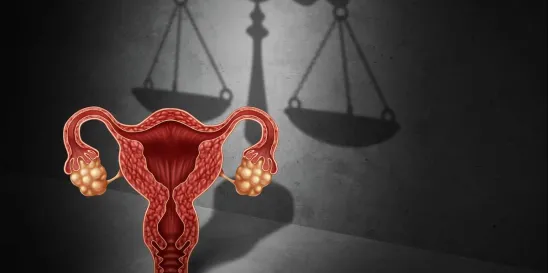On November 7, 2023, the citizens of the state of Ohio voted to codify reproductive rights, including the right to abortion, in the state constitution.
In 2019, Ohio banned nearly all abortions once fetal cardiac activity was detected (typically around six weeks’ gestation) through its “Heartbeat Law.” Challenges to Ohio’s Heartbeat Law under Roe v. Wade and Planned Parenthood v. Casey prevented it from taking effect until the U.S. Supreme Court’s decision in Dobbs v. Jackson Women’s Health Organization repealed those cases. After Dobbs, Ohio’s “Heartbeat Law” became immediately effective and remained in place for almost three months until it was blocked by a state court order on September 14, 2022, under a new challenge based on the state constitution. Ohio’s Heartbeat Law has remained enjoined since then[1] while the efforts to change Ohio’s constitution proceeded separately.
The newly approved constitutional amendment takes effect on December 7, 2023. This amendment should supersede the Heartbeat Law and may reduce many of Ohio’s other abortion restrictions.
What Changed?
The amendment text declares that “[e]very individual has a right to make and carry out one’s own reproductive decisions, including but not limited to decisions on” matters of contraception, fertility treatment, continuing one’s own pregnancy, miscarriage care, and abortion.
Under the amendment, the state may not directly or indirectly “burden, penalize, prohibit, interfere with, or discriminate against” an individual’s voluntary exercise of this right or a person or entity assisting an individual exercising this right unless the state “demonstrates that it is using the least restrictive means to advance the individual’s health in accordance with widely accepted and evidence-based standards of care.”
The amendment does allow for abortion to be prohibited after fetal viability which is defined as “the point in the pregnancy when… the fetus has significant likelihood of survival outside the uterus with reasonable measures” as determined by the pregnant person’s treating physician on a case-by-case basis. Further, the amendment states that in no case may an abortion be prohibited if it is necessary to protect the pregnant person’s life or health, as determined by the treating physician.
What Happens Next?
Though Ohio’s constitution will be amended, existing abortion laws and regulations will remain on the books until repealed or challenged in court. Since the election results were announced, Ohio lawmakers have been vocal about their plans to challenge the new amendment.
What Ohio Providers Can Expect, For Now
Effective December 7, abortion will be permitted through viability, as defined by the amendment, and post-viability if necessary to protect the pregnant patient’s life or health. In the coming months, litigation on this—as well as litigation challenging whether other abortion restrictions (such as an existing 24-hour waiting period and the written transfer agreement requirement) meet the new “least restrictive means” test codified in the amendment—is expected.
Providers should review and update their existing abortion-related policies consistent with this evolving legal framework.
Epstein Becker Green Staff Attorneys Elizabeth A. Ledkovsky and Ann W. Parks contributed to the preparation of this post.
[1] Preterm Cleveland et. al. v. Yost et. al., No. A2203203 (Ct. C.P. Ohio, Oct. 7, 2022).






 />i
/>i
